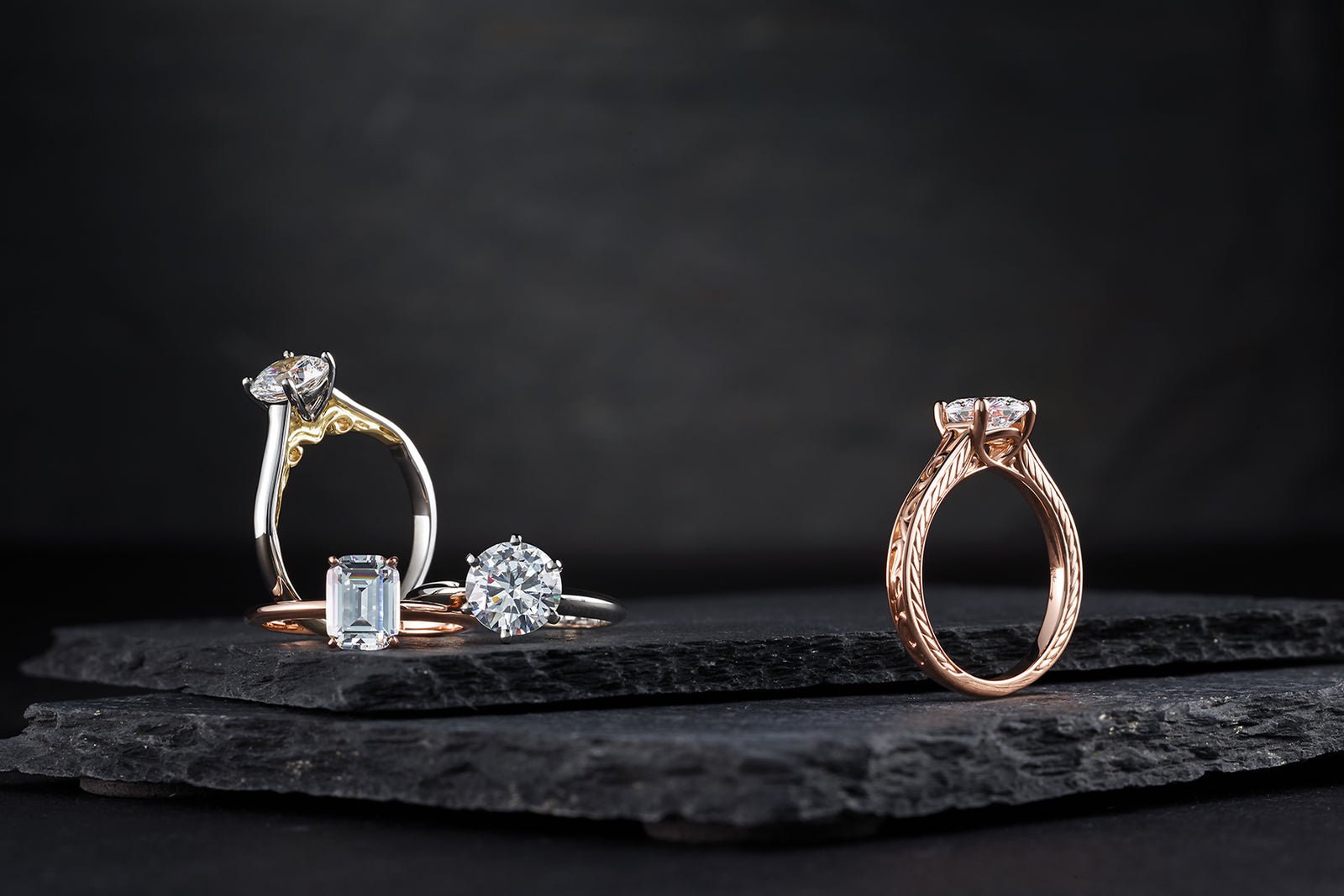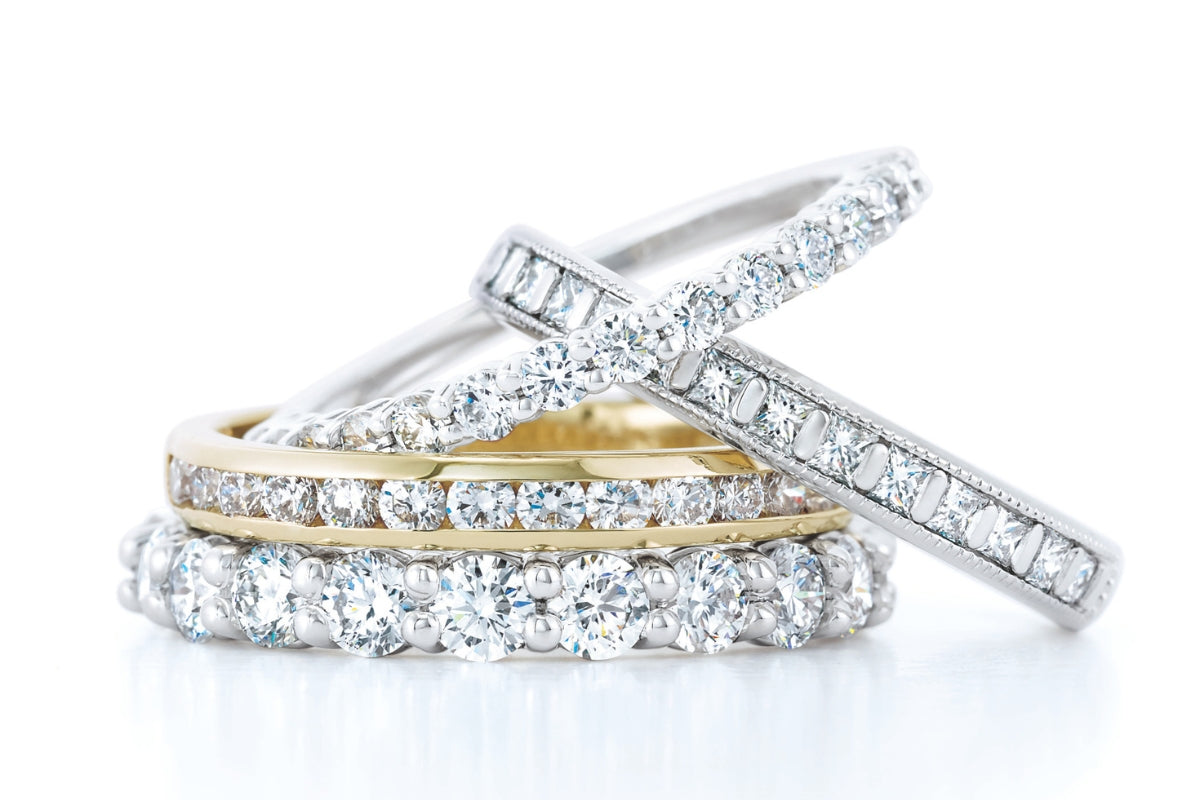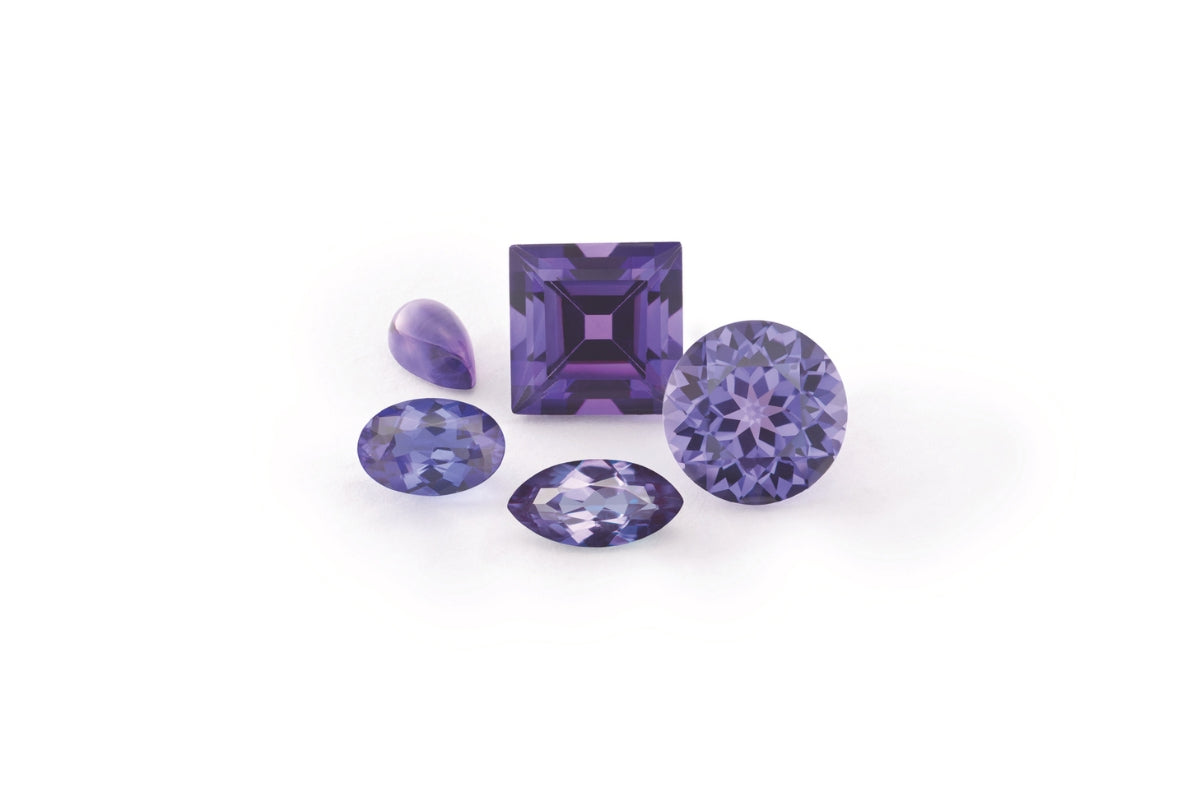When shopping for an engagement ring, you may find yourself noticing subtle differences in the quantity of prongs depicted in engagement rings and wedding bands. Many factors may play a part in how noticeable the prongs are. For example, the type and color of the center stone in contrast to the type and color of the precious metal will contribute to the overall design of the ring. Specifically, for most round solitaire engagement rings, you’ll notice either four prongs or six prongs regardless of the design. Initially, many people may not concern themselves with such a small detail, but upon further investigation and optional choices, one type may better align with your significant others' design preference or your own peace of mind. When shopping online, photos or photorealistic renders of rings sometimes exaggerate details like prongs. In reality and from an arms length away, prongs are noticeable and play an important part of your engagement ring design. Today, we’ll be diving into this topic because many of our clients ask us what the difference is and if choosing a six prong is more beneficial in terms of safety and security.
Before diving too deep into the differences, it’s important to define exactly what a prong is. A prong is an individual narrow arm of precious metal that supports the center diamond or gemstone in place within the mounting (ring). Picture a basketball player palming a basketball, in this case, the player's individual fingers would be acting as the “prongs” holding the basketball. Typically, you’ll find prongs in quantities of four to six per diamond or gemstone. The specific quantity of which will vary based on the overall ring design and the diamond or gemstone shape.

Realize that the term “prong set” is the most common type of setting style. Many consider the prong set style a traditional, classic, and timeless design aesthetic. Why? Because the prong setting neither draws from nor adds too much in terms of design aesthetic. The primary responsibility and purpose of the prongs are to secure and showcase the center diamond or gemstone. In Canada and the United Kingdom, prongs may be referred to as “claws.”
Many times, the center diamond or gemstone shape (outline) may dictate the quantity of prongs needed. The decision between choosing four or six prongs is typically associated with round shape diamonds and gemstones due to the uniformity of its circumference. Think about it, there’s really no noticeable variation in a round (circular) shaped stone. This is in contrast to other shapes, known as “fancy shapes.” For example, when considering fancy shape diamonds or gemstones (any shape other than round), you’ll notice that six prongs may be a couple too many based on the natural outline of the stone which is made up of a combination of curves and points found in ovals, emeralds, and princess cuts.
Let’s hone in on four prongs which technically have two variations in their positioning and are entirely dependent on design and the individual's preferences:
Standard (most common):
- Placement of each prong at the 10 o’clock/2 o’clock and the 8 o’clock/4 o’clock
Diagonal (think North/South):
- Placement of each prong at the 12 o’clock/6 o’clock and the 9 o’clock/3 o’clock
While historically, the classic six prong solitaire setting was made famous by Tiffany & Co. Today, it’s still a desirable quantity of prongs for round shaped center stones. The positioning of the six prongs, especially in a round shaped center stone is quite predictable. The placement of each prong will (typically) be at the 12 o’clock/6 o’clock, 10 o’clock/2 o’clock, and 8 o’clock/4 o’clock, though sometimes it is set with 9 o'clock/3 o'clock dominant.
Benefits include:
- Security, the additional two prongs represent a 50% increase when compared to four prongs
- Piece of mind, one potentially bent or broken prong is less likely to immediately impact the wearability and security of the center stone
Potential drawbacks:
- Additional precious metal required to produce six prongs may slightly increase overall cost
- Additional prongs may slightly inhibit the light performance of the diamond center stone
It’s worth noting here that platinum prongs offer the most security. Many of our clients who are open to a white metal or potentially a two tone engagement ring and want maximum security choose platinum prongs. For additional information, please clickhere to read our blog post about platinum.
The craftsmanship and attention to detail associated with setting any diamond or gemstone is crucial. It’s a very fine and delicate process which only a trained and experienced bench jeweler and stone setter should attempt. Consider it the “installation” of the center stone on top of the ring. The proper placement will ensure that the four or six prong is as secure as it can be. When setting a diamond or gemstone, there’s always a risk of either damaging the outer condition of the stone or even breaking it. Indications of a poor setting would be a lack of alignment and uniformity. This subtlety is hard to notice to the untrained eye, but years down the line the poorly set stone may become compromised, making it less stable and secure for future wear, tear, and routine cleaning and maintenance.
Over time and even with care and caution, prongs are prone to wear and tear. No matter which precious metal you choose and regardless of the quantity of prongs, years down the line you may need to retighten the prongs holding the center stone. Common repairs for prongs also include retipping, which entails rebuilding the top of the prong and repronging, which entails replacing the prong entirely. At Soha Diamond Co., our lifetime warranty covers all normal wear and tear including the prong related repairs mentioned above. To learn more about our lifetime warranty, please clickhere.
Both four prongs and six prongs have their compelling value propositions. At the end of the day, the decision between four prong and six prong settings come down to the individuals preference. For many, the four prongs overall design, style, and therefore appearance of the ring trumps the potential benefits associated with a six prong setting. Likewise, the notion of additional security may supersede the appearance for some people.




